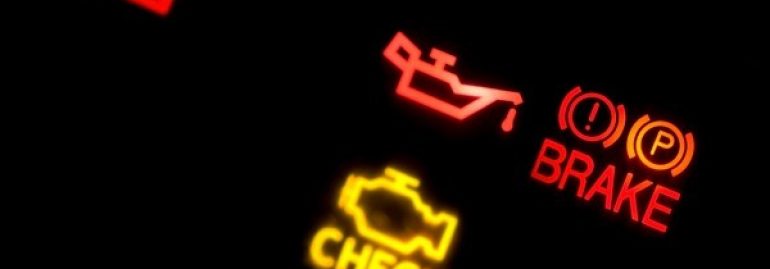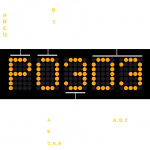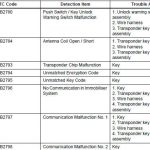If you’ve recently gotten a DTC on your car, you’re probably wondering what to do with it. These codes are all over the map, but let’s take a look at a few of the most common ones. P0782 is the generic transmission code. C0782 is the chassis code. They cover mechanical systems, brakes, and networks. U0782 is for onboard computer and network functions. Each DTC starts with a letter, followed by a number. Hybrid propulsion systems are indicated by either a 0 or a 1, while P0782 is specific to the powertrain.
0
To diagnose a malfunction, you need to understand what the DTC code means. You can read it by entering the last three digits of the code. It can also be read with the help of a scan tool. The scan tool needs to be plugged into the OBD-II port of the car. In general, the diagnostic connector is located somewhere on the dashboard, usually where you would connect a GPS tracker.
The problem with DTC codes is that they emit separate codes that will remain on until the fault is resolved. If the small defect is fixed, the code will automatically go away. Otherwise, it will remain on until the fault is corrected manually. The 0 DTC code indicates a problem with supplementary emission controls or fuel and air metering. All vehicles complying with the OBD2 standard use this type of code. Most manufacturers use the same error message.
The first letter of a DTC denotes the system or component. The code contains four digits, the last three are “green digits.” These codes are used to diagnose issues with a vehicle’s systems. The first digit indicates the category of the problem. Once the vehicle’s system has been diagnosed, a technician will know which system is causing the problem. In most cases, this code is related to the electrical system.
P
The P dtc diagnostic trouble code indicates that the vehicle has a muddled MAF sensor. This muddled sensor can cause inaccurate fuel mixture. An OBD2 scanner can help you determine what the problem is with your vehicle. Identifying the problem with your vehicle can save you from costly repairs later on. This article will discuss the importance of understanding the P dtc. You should also be aware that a vehicle that has this code is not always going to have a malfunction.
The P dtc code is divided into different parts. First, the first digit tells the system category. Next, the second digit is a two-digit number that defines the manufacturer of the vehicle. A technician will use this information to determine which part of the vehicle is malfunctioning. The muddled codes are the most difficult to diagnose. Fortunately, the process is much easier if you use a simple diagnostic tool.
C
A DTC (diagnostic trouble code) is a standardized diagnostic trouble code that indicates a problem with a particular system in a vehicle. The DTCs have a first digit that is either 2 or 3. A P or C code is manufacturer controlled, while a DTC with a single digit is generic. An example of a P code is P0128, which indicates that the engine coolant temperature has fallen below the thermostat regulating the temperature.
The code can be categorized as either J1939 or ISO 15765. The state of the DTC determines how the vehicle responds to a particular condition. When the DTC reaches the Previously Active state, the manufacturer determines which action to take next. If the manufacturer specifies this behavior, the DTC should be returned to the Active state. Afterwards, it would move to Pending, but a manufacturer-specific behaviour will be chosen.
DTC codes can be dangerous, since they can cause a vehicle to malfunction. It is important to seek professional advice to prevent further damage to your vehicle. The MIL light may be intermittently illuminated or constantly illuminated. In either case, the engine computer may have a malfunction and go into backup mode, which uses a ton of fuel and may cause a vehicle to fail emission tests. If the code is present, a mechanic should be consulted immediately.
Chassis
If you are looking to diagnose your car, you may have come across the Chassis DTC diagnostic trouble code (DTC) on your dashboard. While it can be difficult to decipher these codes, you can use a database of these codes to determine the cause of the problem. DTCs are basically a code indicating a malfunction with your car’s engine. The first letter of a DTC is its generic name, while the other four are specific to each specific system. If you have trouble finding a code on your dashboard, you can use the search function that is often found in your browser’s ‘edit’ menu or by using Ctrl+F in Internet Explorer.
The Chassis DTC diagnostic trouble code comes in three sub-categories: P-codes, B-codes, and C-codes. P-codes cover the functions that happen outside the passenger compartment, while C-codes deal with the powertrain. These three categories are often broken down into sub-categories by their first letter. The P-codes are more specific, while the C-codes are general-purpose codes. These codes may be related to your vehicle’s powertrain or other shared computer systems.
5
DTCs, or Diagnostic Trouble Codes, are a way to diagnose issues in your car before they become a total failure. Although these codes are useful in detecting problems early on, they do not always provide complete information. For example, a P030X code means that your cylinders are misfiring, but it does not specify which cylinder is malfunctioning. Although this system is not perfect, it gives vehicle owners a significant advantage over other auto repair methods.
If the check engine light is flashing, the cause is likely to be one of a number of different problems. In these cases, a DTC can help you to pinpoint the problem and resolve it. These codes are used by the onboard diagnostic system, or OBD, to identify specific problems with a car. For example, DTC U0609 indicates a problem with the network/bus and computer output circuit. Using this code to diagnose problems is essential for preventing vehicle breakdowns.
PDTC
Pending DTCs are codes generated when an issue is detected with a car’s engine. They are usually glitches or warnings that require a more serious repair. There are several common pending DTCs, and it’s crucial to understand which ones are the most serious. Read on to discover more. We will discuss each one in more detail. This code will be shown when the temperature of the engine coolant is below the thermostat setting.
These codes are generated when a computer identifies a problem with the input it receives. The computer makes a note of this information and uses it to fix the problem. PDTCs can be cleared using the normal diagnostic procedure, but the car is likely to show up with another one. This is why you should always read the owner’s manual before attempting any type of diagnostic procedure. It will also help you to understand the basics of troubleshooting.
The PDTC is often caused by an issue with the transmission shift solenoid or the vehicle speed sensor. Some vehicles will pass a Smog Check inspection before the trouble code reappears. The effects on the air quality are drastic and the effectiveness of the Smog Check program is reduced. Using a readiness monitor can reduce the chance of a vehicle passing Smog Check with an active DTC. This is a good way to verify that emission control systems are functioning properly.
PDTC identifies a NOx Control Malfunction
The PDTC diagnostic trouble code P20EE is related to a NOx Control Malfunction. The selective catalytic reduction (SCR) catalyst is a component in a diesel engine that converts nitrogen oxides into harmless carbon dioxide. The powertrain control module (PCM) monitors the efficiency of this system and stores related error codes with it. The definition of this code varies depending on the make, model, and powertrain configuration.
If the test fails to identify a cause for the problem, the PCM will store a NOx Control Malfunction diagnostic trouble code. This code is also important because it indicates whether the NOx Control system is performing correctly or not. When the emissions test is not performing as intended, a fault may occur. The PCM may enter derate mode, which reduces engine performance and limits the amount of power available to the engine. The PDTC diagnostic trouble code is displayed on the instrument cluster display or the computer. If the code is intermittent, it may be read with a scan tool connected to the vehicle’s Serial Communication Port (SCP).
PDTC is ignored if vehicle has completed 15 warm-up cycles
If you notice that your PDTC keeps displaying, you should first make sure that you haven’t done anything to cause the problem. In most cases, the PDTC simply indicates a glitch in the system. But in some cases, it could mean a much larger problem. So how do you know which one you should ignore? To start, you need to make sure that you have completed at least 15 warm-up cycles since your car was last inspected.
Currently, vehicles with a PDTC can pass the Smog Check inspection. But if you have a problem, the vehicle will fail the inspection. The inspection can’t be done if the vehicle does not store the PDTC. To prevent this, you can try to do some diagnostics on the car. There are many ways to test the PDTC.






